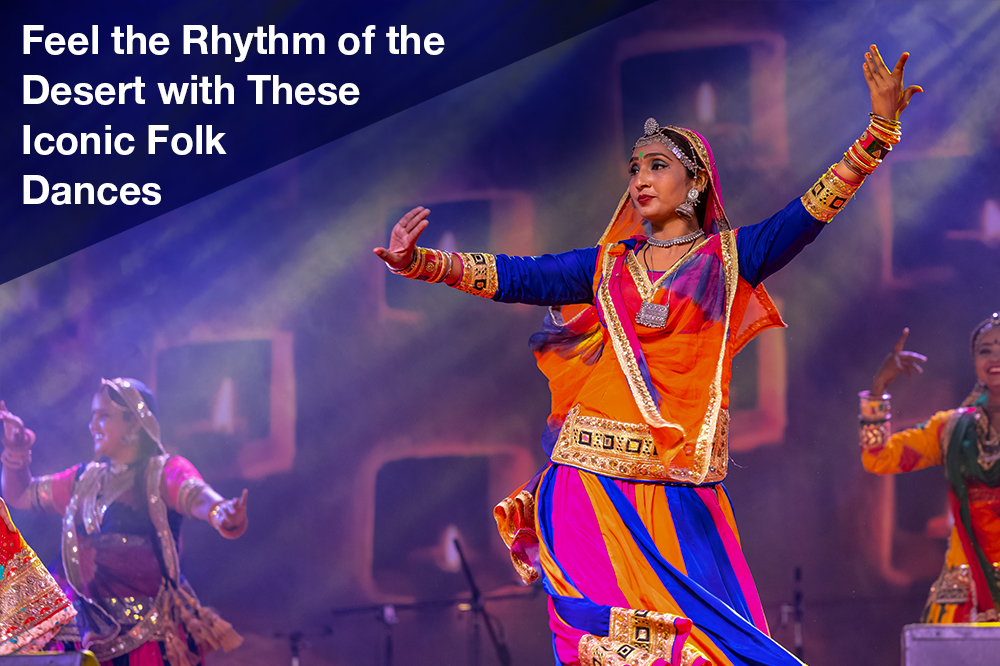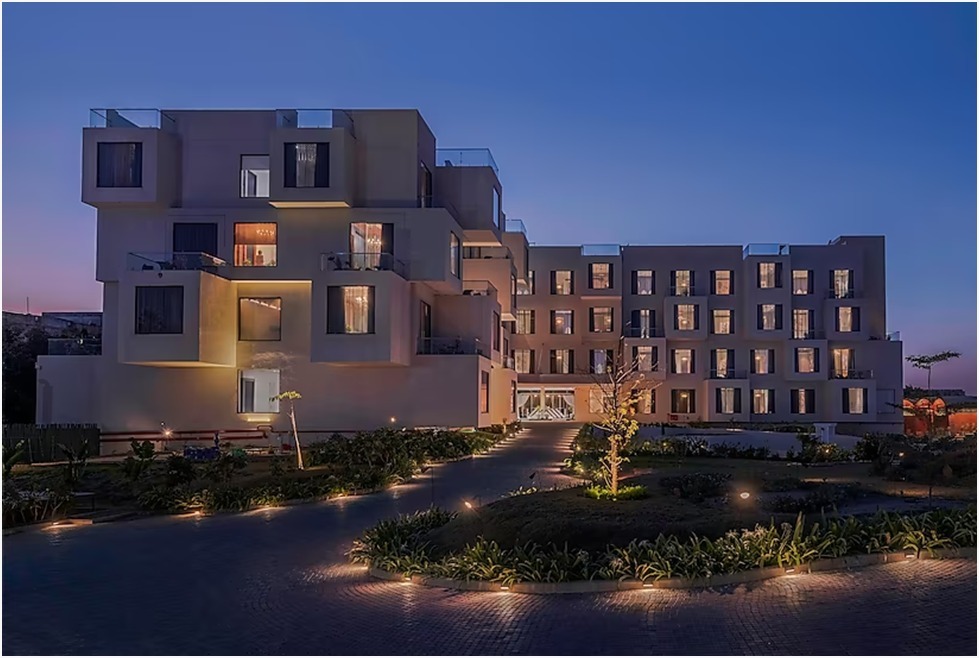Top 8 Rajasthani Folk Dances That Reflect the Spirit of Rajasthan

In Rajasthan, every gesture conveys a tale, and every beat reflects centuries of custom. Nothing better captures the state’s lively character than its folk dances, from the golden sands of Jaisalmer to the royal courts of Jaipur. These performances are expressions of life, love, commitment, and tradition rather than merely works of art.
Let’s dive into 8 iconic Rajasthani folk dances that beautifully showcase the rhythm, heritage, and timeless charm of this majestic desert land.
Originally performed by the Bhil tribe and later adopted by the Rajput monarchy, ghoomar has come to symbolize grace, celebration, and tradition. Exuding feminine elegance, the dance is often performed in groups and celebrates celebration and togetherness.
Events include Weddings, Gangaur, Teej, and festive celebration. Highlights include Circular movements, twirling skirts, traditional attire, and graceful group choreography
The Kalbelia tribe, who were traditionally snake charmers, perform Kalbelia, a stunning display of grace and agility. Performers in this enthralling dance sway, spin, and bend their bodies in captivating patterns that mimic the smooth, slithering movements of a cobra. The dancers’ deep cultural roots are symbolized by their swirling, black skirts that are richly embroidered with colorful threads and mirror work.
With the help of traditional instruments like the dholak and the been (snake charmer’s flute), the music is hypnotic and fast-paced, putting listeners into a state of trance. Kalbelia is a celebration of life, movement, and identity rather than just a show.
Events include Cultural festivals like the Pushkar Fair, Desert Festival, and state tourism events. Highlights include Snake-like gestures, rapid twirls, expressive eyes, vibrant costumes, and the intoxicating rhythm of folk instruments
Bhavai, accompanied by lively costumes and live folk music, is more than just a show; it’s a celebration of the resilience and strength of women that has been handed down through the ages.
Events include state functions, cultural exhibitions, and festive performances. Highlights include vibrant traditional clothing, amazing balancing performances, and exuberant live music.
The dance, which symbolizes happiness, wealth, and the sacred feminine, is closely associated with auspicious events such as marriage and childbirth. The luminous images, when performed at night, create a mystical effect.
Events include religious services, weddings, and celebrations of childbirth. Highlights include the flaming brass pots, flowing costumes, rhythmic footwork, and captivating images.
The devotional grandeur and difficulty of the performance are further enhanced when a sword or other ornamental object is occasionally balanced during the performance.
Events: Religious assemblies, festivals honoring folk deities . Highlights include synchronized hand-and-body motions, cymbal percussion, and spiritual storytelling.
It is a crowd favorite during large festivals because of its dramatic flair and martial rhythm, which evoke the bravery of Rajasthani warriors.
Events include Holi, Janmashtami, and neighborhood festivities . Highlights include synchronized circular movements, stick-based choreography, warrior-like clothing, and thumping drum beats.
Let’s dive into 8 iconic Rajasthani folk dances that beautifully showcase the rhythm, heritage, and timeless charm of this majestic desert land.
- Ghoomar: The Magnificence and Elegant Dancing
Originally performed by the Bhil tribe and later adopted by the Rajput monarchy, ghoomar has come to symbolize grace, celebration, and tradition. Exuding feminine elegance, the dance is often performed in groups and celebrates celebration and togetherness.
Events include Weddings, Gangaur, Teej, and festive celebration. Highlights include Circular movements, twirling skirts, traditional attire, and graceful group choreography
- The Serpent Dance in Kalbelia
The Kalbelia tribe, who were traditionally snake charmers, perform Kalbelia, a stunning display of grace and agility. Performers in this enthralling dance sway, spin, and bend their bodies in captivating patterns that mimic the smooth, slithering movements of a cobra. The dancers’ deep cultural roots are symbolized by their swirling, black skirts that are richly embroidered with colorful threads and mirror work.
With the help of traditional instruments like the dholak and the been (snake charmer’s flute), the music is hypnotic and fast-paced, putting listeners into a state of trance. Kalbelia is a celebration of life, movement, and identity rather than just a show.
Events include Cultural festivals like the Pushkar Fair, Desert Festival, and state tourism events. Highlights include Snake-like gestures, rapid twirls, expressive eyes, vibrant costumes, and the intoxicating rhythm of folk instruments
- Bhavai – The Balancing Wonder
Bhavai, accompanied by lively costumes and live folk music, is more than just a show; it’s a celebration of the resilience and strength of women that has been handed down through the ages.
Events include state functions, cultural exhibitions, and festive performances. Highlights include vibrant traditional clothing, amazing balancing performances, and exuberant live music.
- The Dance of Light and Devotion, or Chari
The dance, which symbolizes happiness, wealth, and the sacred feminine, is closely associated with auspicious events such as marriage and childbirth. The luminous images, when performed at night, create a mystical effect.
Events include religious services, weddings, and celebrations of childbirth. Highlights include the flaming brass pots, flowing costumes, rhythmic footwork, and captivating images.
- Rhythmic and Devotional Terah Taali
The devotional grandeur and difficulty of the performance are further enhanced when a sword or other ornamental object is occasionally balanced during the performance.
Events: Religious assemblies, festivals honoring folk deities . Highlights include synchronized hand-and-body motions, cymbal percussion, and spiritual storytelling.
- The Warrior’s Dance by Gair
It is a crowd favorite during large festivals because of its dramatic flair and martial rhythm, which evoke the bravery of Rajasthani warriors.
Events include Holi, Janmashtami, and neighborhood festivities . Highlights include synchronized circular movements, stick-based choreography, warrior-like clothing, and thumping drum beats.






